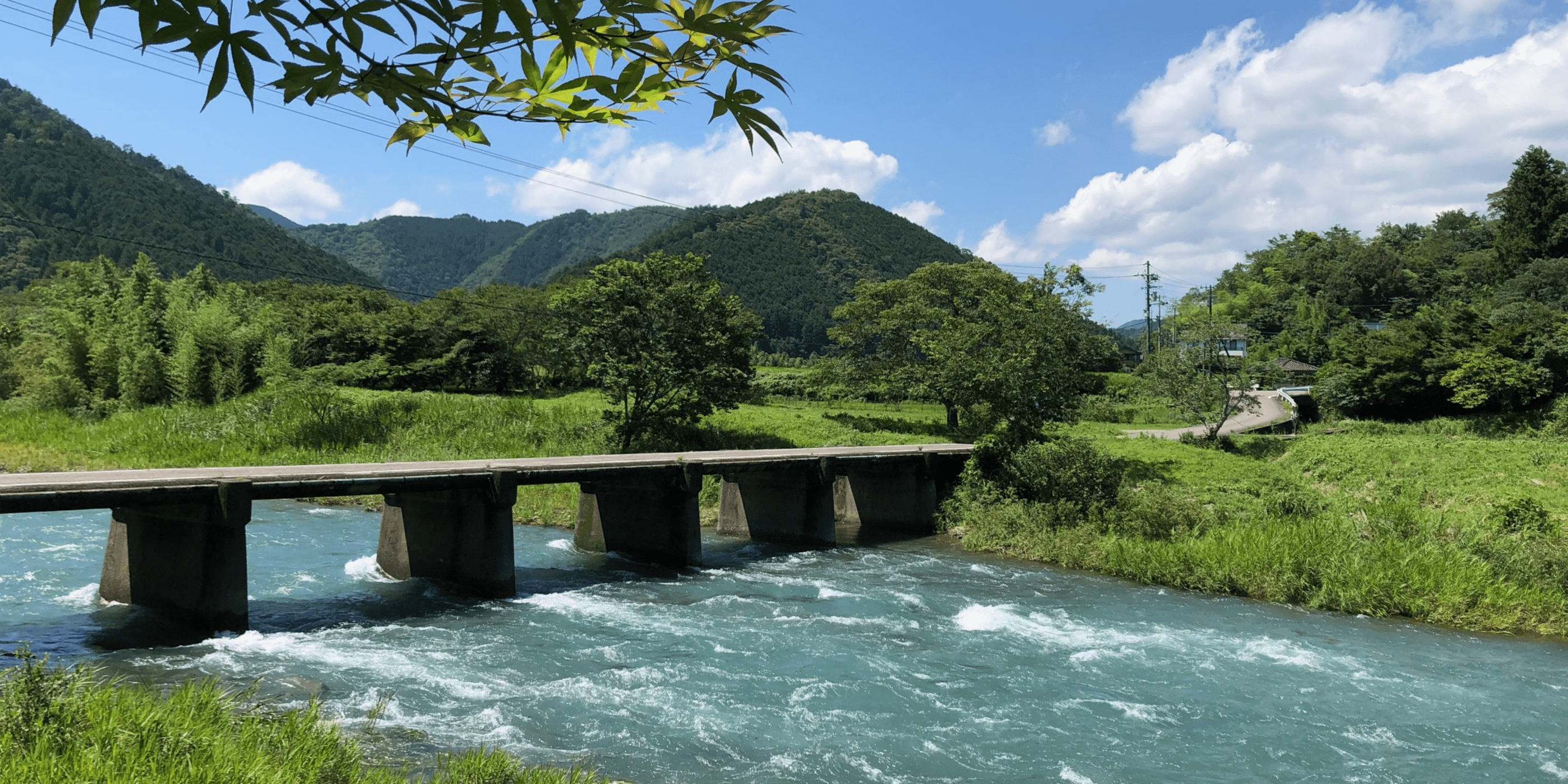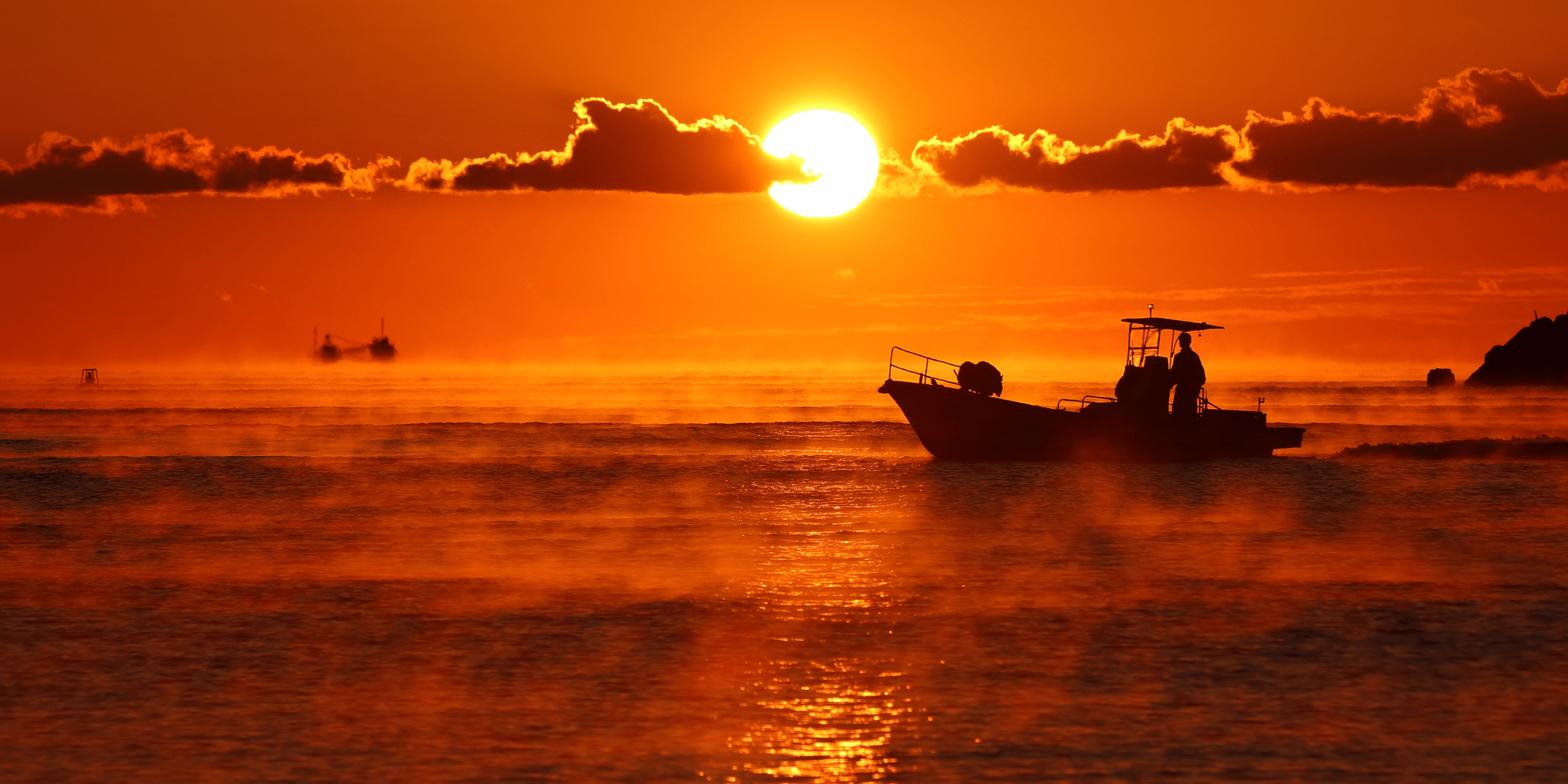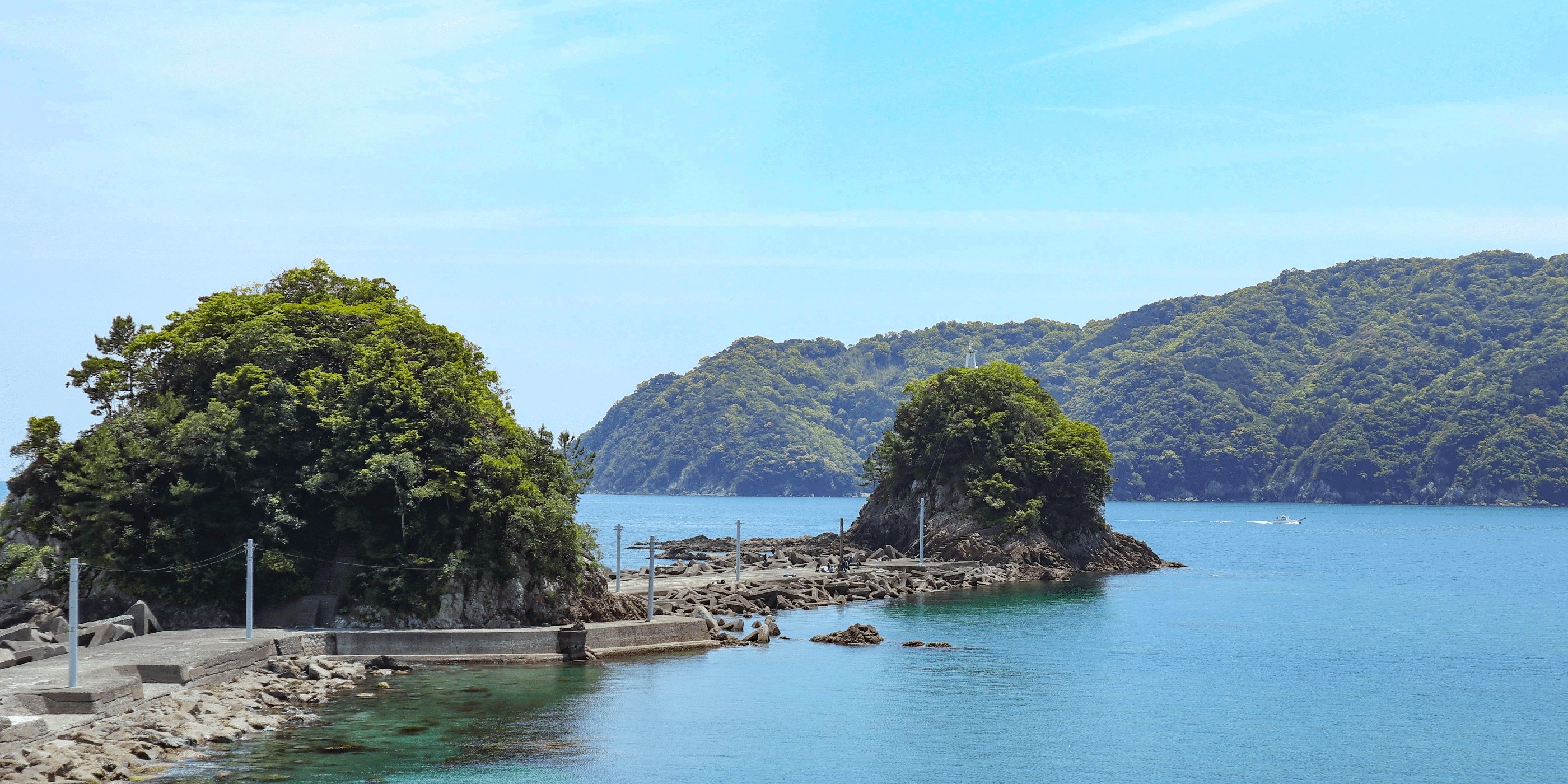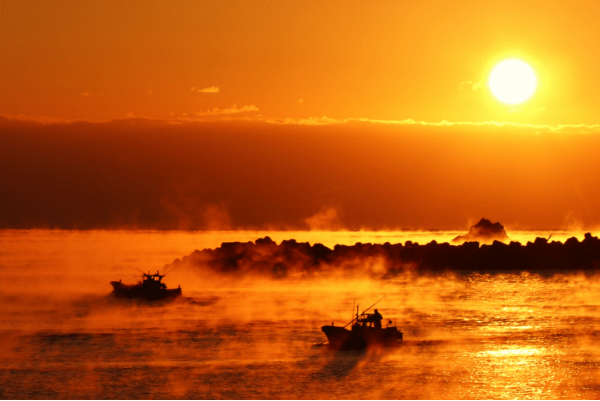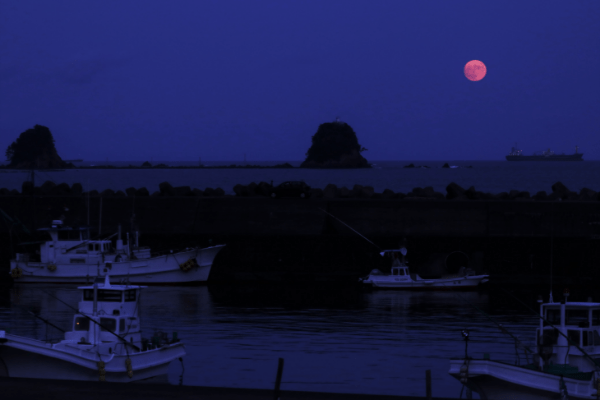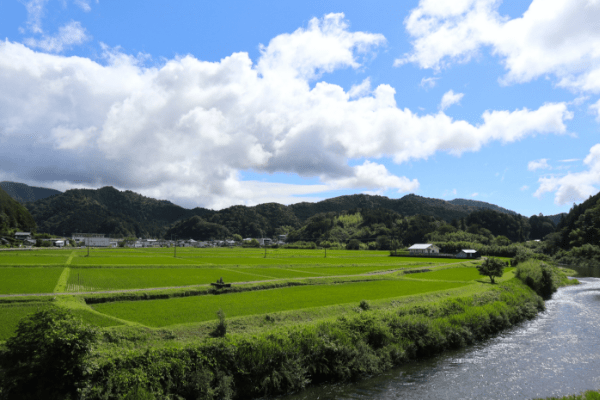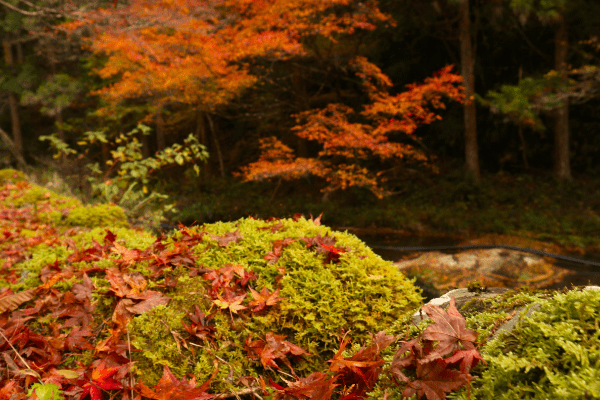Nakatosa Town
About Nakatosa Town
Nakatosa Town is nestled in the central heart of Kochi Prefecture. It consists of 3 areas, the Kure Area facing the Pacific Ocean famous for its skipjack fishing of Bonitos, the Kaminokae Area with small fishing villages along the coast offering sightseeing of fishery, and the inland Onomi Area farming area surrounded by 300 meters tall terrain mountains where the clear waters of the Shimanto River originates.
Many people throughout the Nation visit the festival of “Kure Hachimangu Shrine Taisai” and “Bonito Festival” which are among the 3 major festivals of Kochi. Also, Nakatosa Town is known as one of the profound sightseeing place in the Prefecture for its scenic beauty of the last remanence of Japan Stream, the Shimanto River with many scenic sites such as the Chinkabashi bridge (Submersible Bridge) and also the Daruma Sun Rise. Access is also close to Kochi City and the airport.
The fisherman township of Kure has historically developed on fishery and shipment of logs from the upper Shimanto basin.
The township is designated as the “National Important Cultural Landscape”.
Bonito from Nakatosa Town Kure
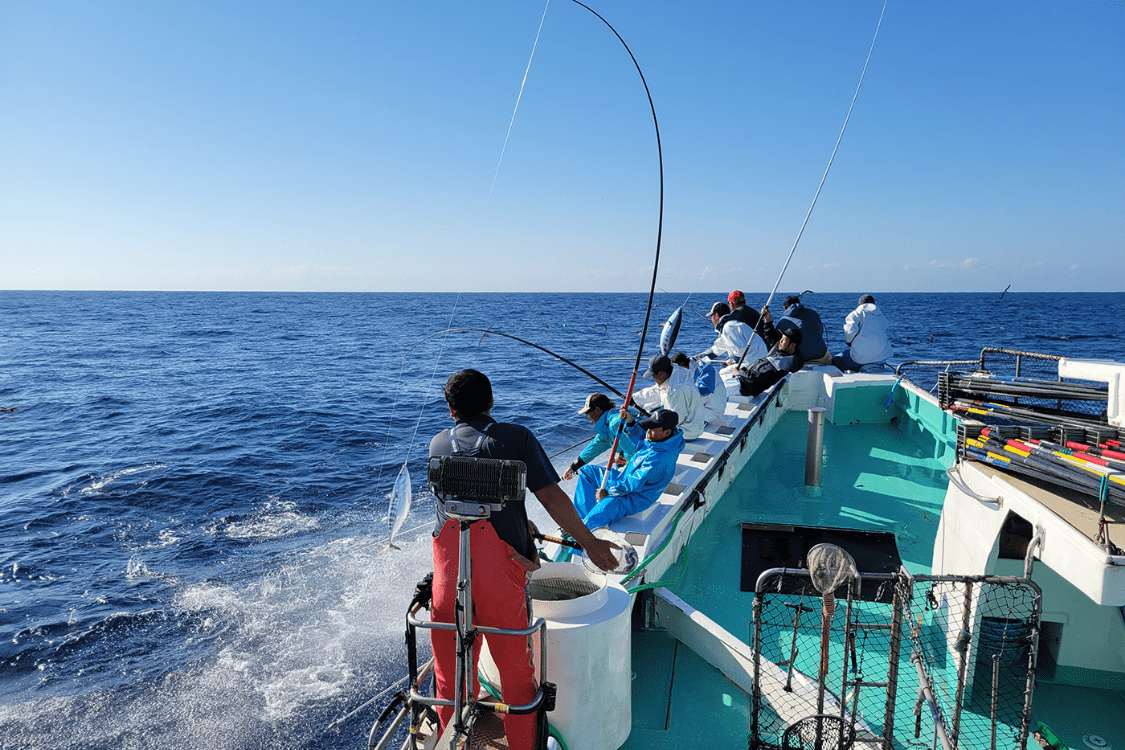
History
Nakatosa Town Kure - A town of “single-line bonito fishing” continuing for over 400 years!
The bonito fishing has long flourished off the coast of Tosa since ancient times as a result of the Tosa Clan’s encouragement of the production of dried bonito, a local specialty of Nakatosa Town Kure. The fishing method used in Kure proudly boasts a tradition of more than 400 years and is called “Ipponzuri” (fishing with a single line). Unlike bonito caught by the purse seine fishing, this method does not damage the bonito, keeps its freshness, and does not catch the entire school of fish which is good for the bonito, the consumers, and the environment.
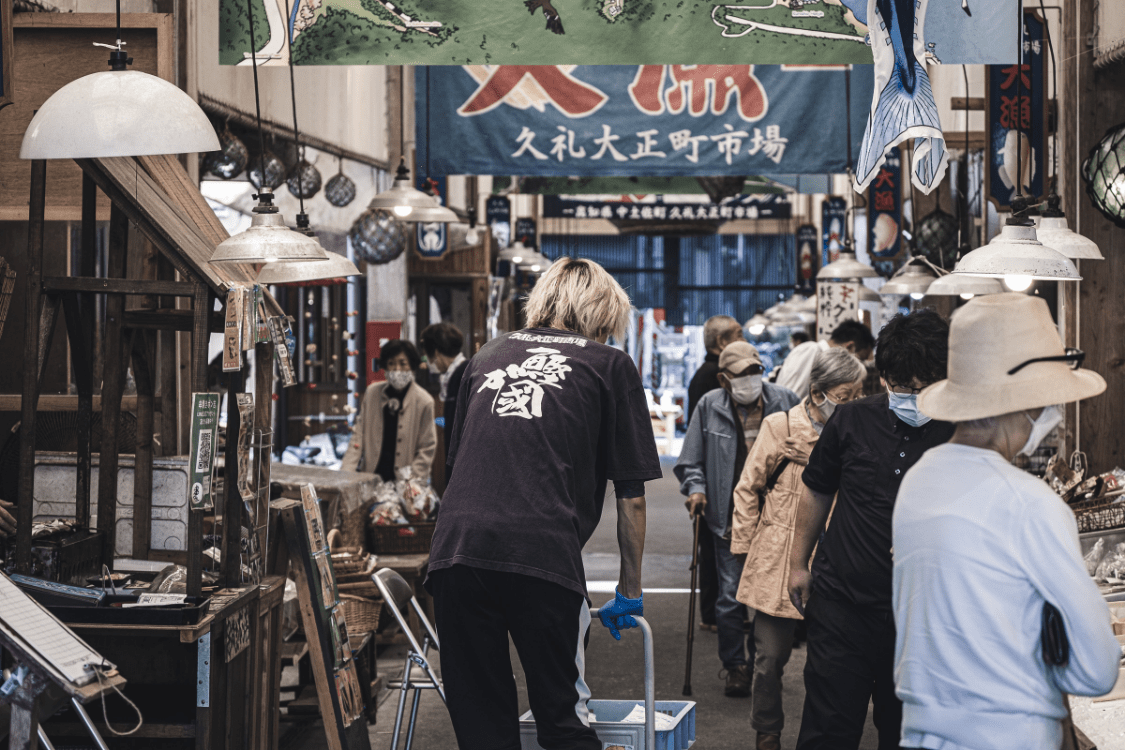
SDGs Kure Bonito
Sustainable Fishing The times have finally caught up with Kure! Earth-friendly bonito fishing in Kure
The single-line bonito fishing that has been practiced for over 400 years in Kure is an eco-friendly fishing method that does not catch the entire school of bonito like purse seine fishing and uses relatively little fuel because the fishing grounds are close to the coast. In addition, the Kure Fishing Cooperative uses baskets instead of Styrofoam containers for their auctions and these baskets are used repeatedly between fish stores and cooperative. The close proximity of the Kure Taisho Machi Ichiba Market where the fish are sold and the Fishing Cooperative are only five minutes away by car or bicycle which contributes to local production for local consumption.
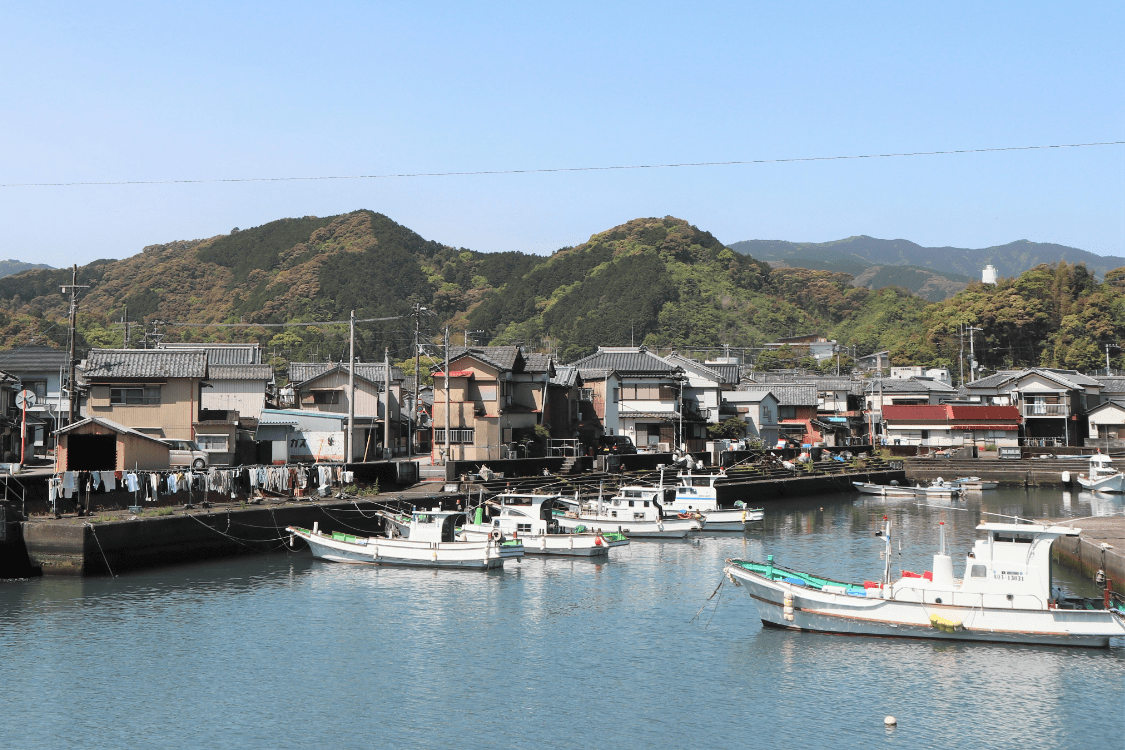
Culture
Since fishing is an activity with Nature, it can be dangerous and may result in unexpected poor catch. For this reason, the fishermen of Kure have long cherished festivals and rituals for good luck. Although the way of conducting festivals has changed recently due to the changing lifestyle of fishermen and the aging of the population, the culture of the fishing town has been strongly inherited in this town.

First Fishing Town Selected as a National Important Cultural Landscape!
The mouth of the Kure River is used as an inner harbor surrounded by small alleys which are as intricate as a maze. Taking a stroll around Kure, you will find sinks in front of houses where fish were cleaned and sold; such a nostalgic landscape of fishermen’s homes coexisting in harmony with the harbor.
In February 2011, Kure was the first fishing town in Japan to be selected as a National Important Cultural Landscape showcasing the history of town’s development as a fishing and lumbering port which is still evident today in Kure Taisho Machi Ichiba Market and former coal warehouse complex.
Why Kure’s bonito is so delicious
A Town where the three essentials are mastered by professionals
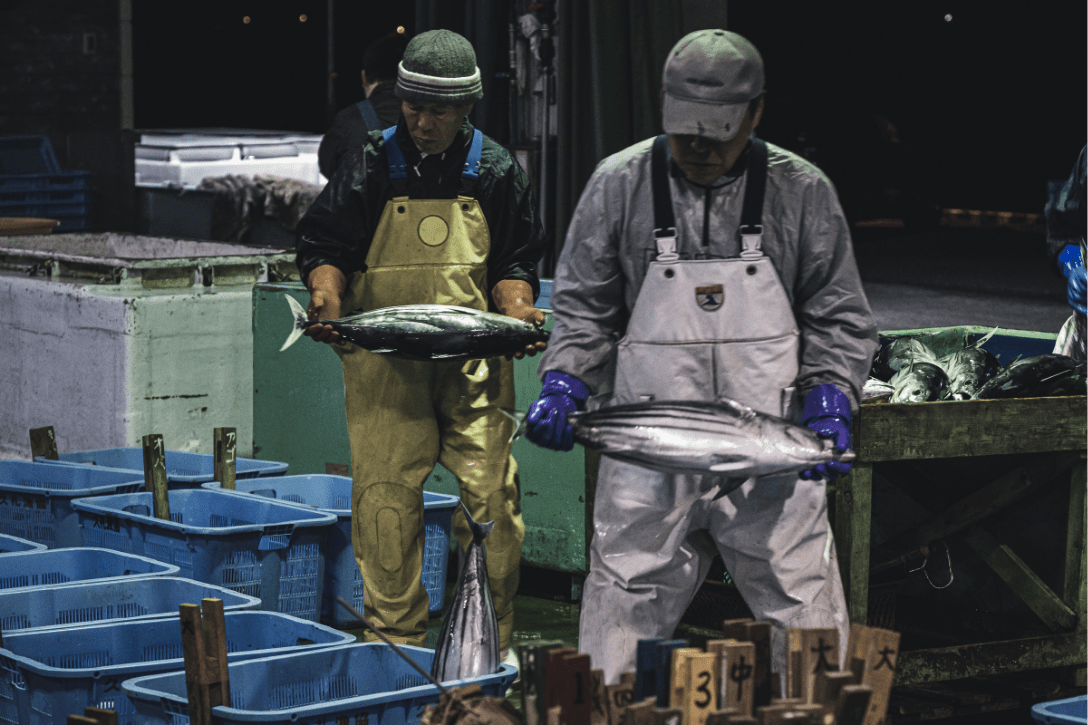
1.
Bonito Fishing Professionals
Superior skill to catch fresh bonito
Fishermen basically return in 24 hours, one day return fishing!
In Kure, it is the norm to eat fresh, not frozen, bonito, so fishermen place great importance on “freshness”. For this reason, bonito fishing in Kure is mainly “one-day return fishing”, leaving the port in the middle of the night and returning by the evening of the next day. Furthermore, the fishermen in Kure must keep a vigil by continuing to chill the bonito after fishing to maintain its freshness because bonito are affected by shock, stress, and even the slightest temperature change. All of this effort is made to meet the expectations of the people who look forward to delicious bonito.
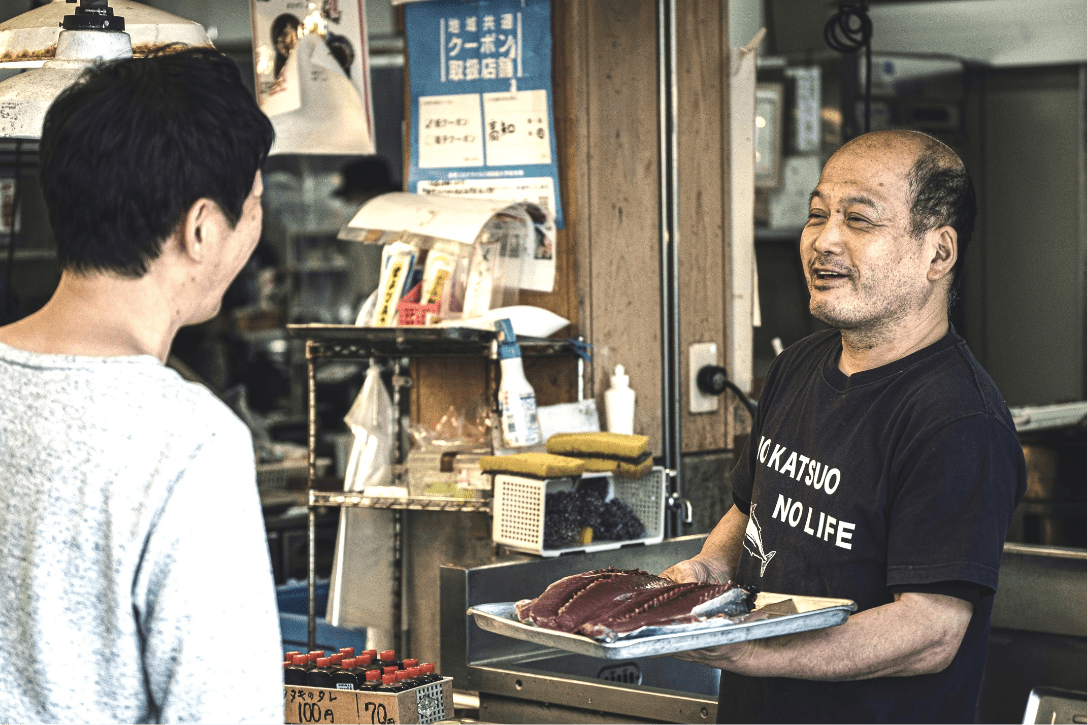
2.
Bonito Selling Professionals
The skill to identify delicious fish and to maintain freshness while processing
Discernment is what counts because the fish vary from one to another!
The next person to receive the baton for the bonito that fishermen put their all into catching is the “fresh fish store”. Even bonito that have been raised in the same school and fed on the same food can vary greatly in quality. Even with a single bonito, “half of the fish is delicious, but the other half is not tasty”, so a keen eye is needed to determine not only the body of the fish, but also the quality of the flesh. Of course, freshness must be maintained, so speed is also a very important factor. The fresh fish store staff put all their attention on the bonito in order to meet the expectations of the customers who are in front of them.
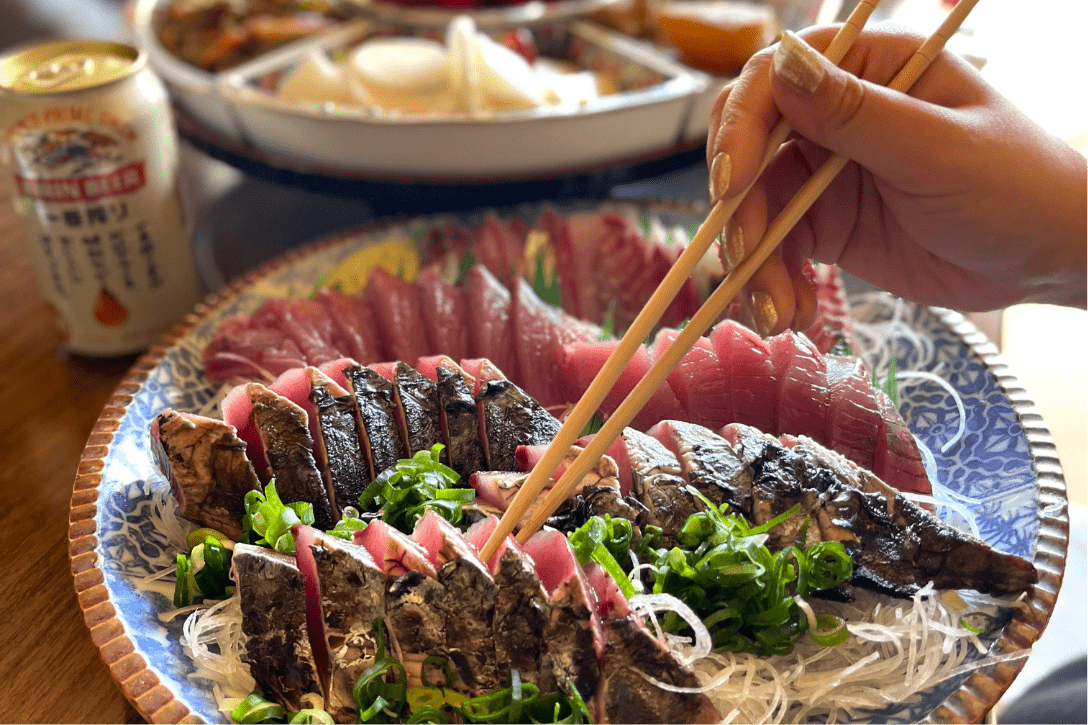
3.
Bonito Eating Professionals
Eating an extraordinary amount of bonito!
Townspeople with high evaluation of bonito. Townspeople who know the difference in taste are the ones to train the fresh fish restaurants every day!
The reason why fishermen and fresh fish restaurants in Kure are so particular about bonito…is because there are townspeople (=Bonito Eating Professionals) who know the difference in taste and quality of bonito. According to Tanaka Fresh Fish Store, the people of Kure eat approximately 80% as sashimi and 20% as tataki (seared bonito), and they are very particular about sashimi, which is freshness-driven. Because they have been eating bonito for generations, many of them have discerning palates, and their tastes are highly refined. This undisciplined evaluation by bonito eating professionals leads to a sense of intensity and motivation for the fishermen and fresh fish restaurants in Kure to perform their work at a high level.
Access
Address
6370-2 Kure Nakatosa-cho,Takaoka-gun, Kochi-ken

